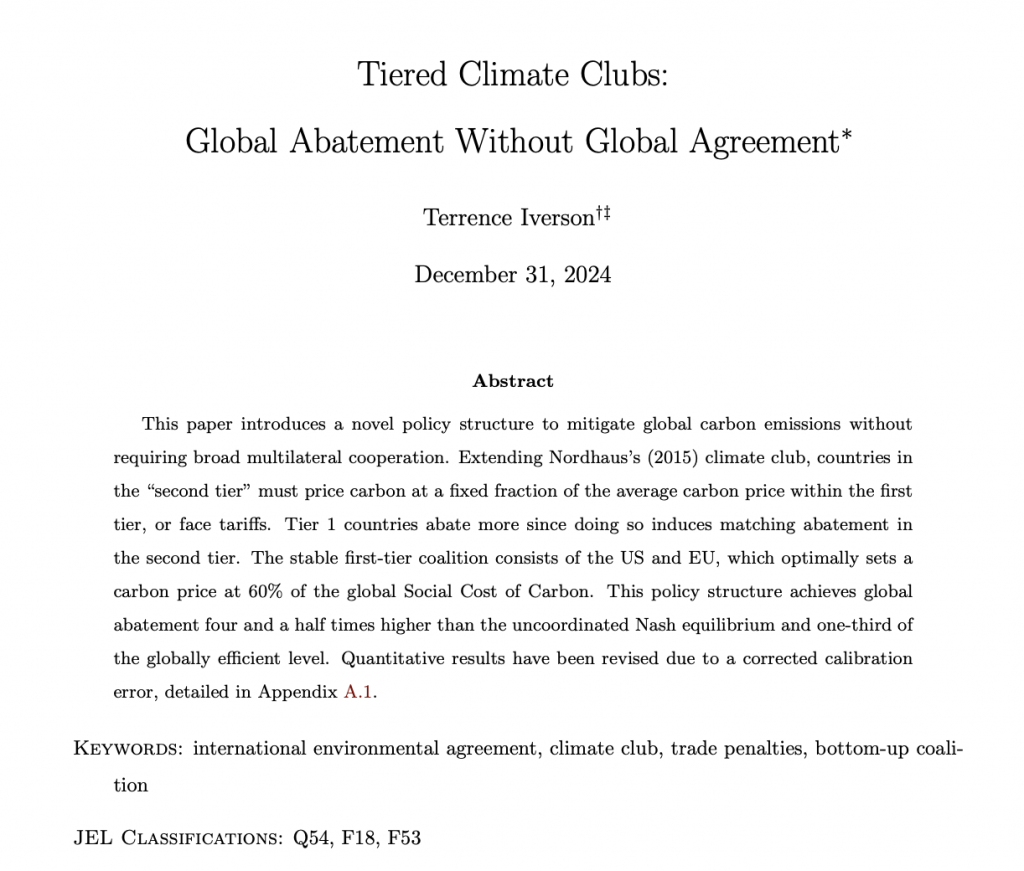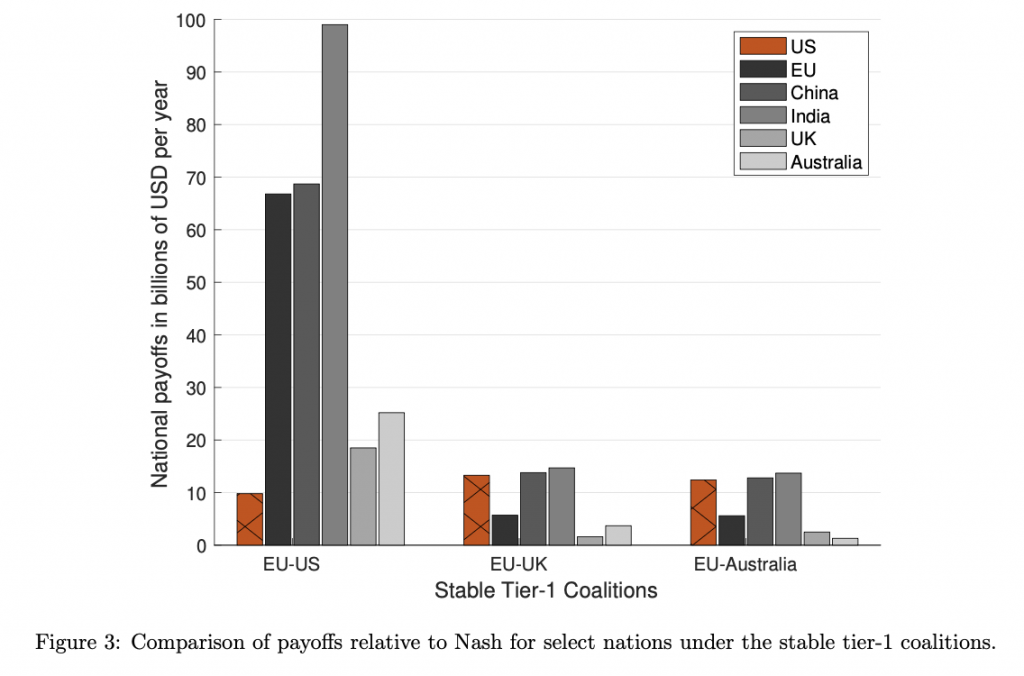I want to also share here some reflections on this paper by Terrence Iverson. I had shared these on social media but find them useful to archive them in longer form here.

The paper in essence describing the EU’s approach around CBAM which aims to adjust distortions that arise from dirty production embodied in traded goods by levying a tax at the border on the embodied emissions. The table from the paper highlights huge variation in GHG intensity.

The paper simulates stable coalitions and associated payoffs in this game. You see that EU/US working in tandem in Tier 1 is “best” for all players, even those that may find themselves in Tier 2. You do see the ambivalence though of the US which may be broadly indifferent if there are smaller coalitions, which would have to set higher carbon price.
But unfortunately under Trump, EU/US have “beef” that I think is of a different nature. But the EU aims to push ahead by working increasingly with more state legislators in the US, as carbon pricing mechanisms covering at least the power sector nowadays cover more than 30% of US states and around 40% of GDP.
The important observation here is that China being outside of the coalition has highest payoff structure for all players but requires EU and US cooperation. This is more difficult under Trump.

What is the mechanism here for why is it in CN interest to be not inside Tier 1? This is because China has high abatement cost, high carbon intensity & high cost of damages. Due to this combination, if China were to join Tier 1 the cooperative carbon price would be lower compared to the price with CN outside.
There is more in the paper and it is nice and elegant, BUT it basically articulates broadly speaking what is ALREADY in place with the CBAM that offers a two-tier system where foreign producers (i) adopt EU-like carbon markets, (ii) document their carbon footprint, or (iii) default to carbon benchmarks.
The current threat to this system by the new German leadership in Berlin is undermining a system that is working. And it is increasingly working well despite the US attack on multilateralism. The sceptre of CBAM from 2026, along with other geopolitical initiatives such as the IMEC corridor help socialize carbon pricing. And in many instances it is the existential risk that some countries are facing from rising sea levels that make compliance incentive compatible.
Here are the most recent examples of countries moving to adopt EU-like carbon markets (equivalency judgement pending).
- United Kingdom (UK ETS) — launched Jan 1, 2021. ICAP profile
- China (national ETS) — launched 2021 for power; expansion to steel, cement & aluminum announced/underway, with guidelines to shift toward an absolute cap. ICAP news · Reuters · ICAP guidelines
- Germany (national fuel ETS – nEHS) — started 2021 for heating/transport fuels; phased price path. ICAP profile
- Washington State, USA (Cap-and-Invest) — started Jan 1, 2023. ICAP profile · Program site
- Indonesia (power-sector ETS) — launched Feb 2023; phased approach. ICAP news · ICAP profile
- Japan (GX-ETS) — voluntary phase (2023–25), planned move to compliance from FY2026. ICAP profile · ICAP Status Report 2025 (PDF)
- Mexico (ETS) — pilot since 2020; operational phase expected ~2025. ICAP profile
- Brazil (SBCE) — national ETS law passed Nov–Dec 2024; implementation underway. ICAP news · ICAP update
- India (CCTS) — detailed regulations adopted July 2024 for a compliance market (intensity-based). ICAP news · ICAP profile
- Vietnam (pilot ETS) — pilot to start 2025 and full market by 2029 (per government roadmap). ICAP news · ICAP update · S&P Global
- Türkiye (Climate Law → ETS) — July 2025 law sets the legal basis for a national ETS. ICAP news · ClientEarth
- Egypt (VCM infrastructure via EGX) — 2024 decrees create rules to list & trade carbon credits on the Egyptian Exchange; national platform launched. Baker McKenzie summary · Legal explainer · EGCX (platform)
- Pakistan — issued “Policy Guidelines for Trading in Carbon Markets – 2024”; positions for Article 6 participation and potential domestic trading architecture. Government guidelines (PDF) · Pakistan NDC 3.0 (2025) · Policy brief